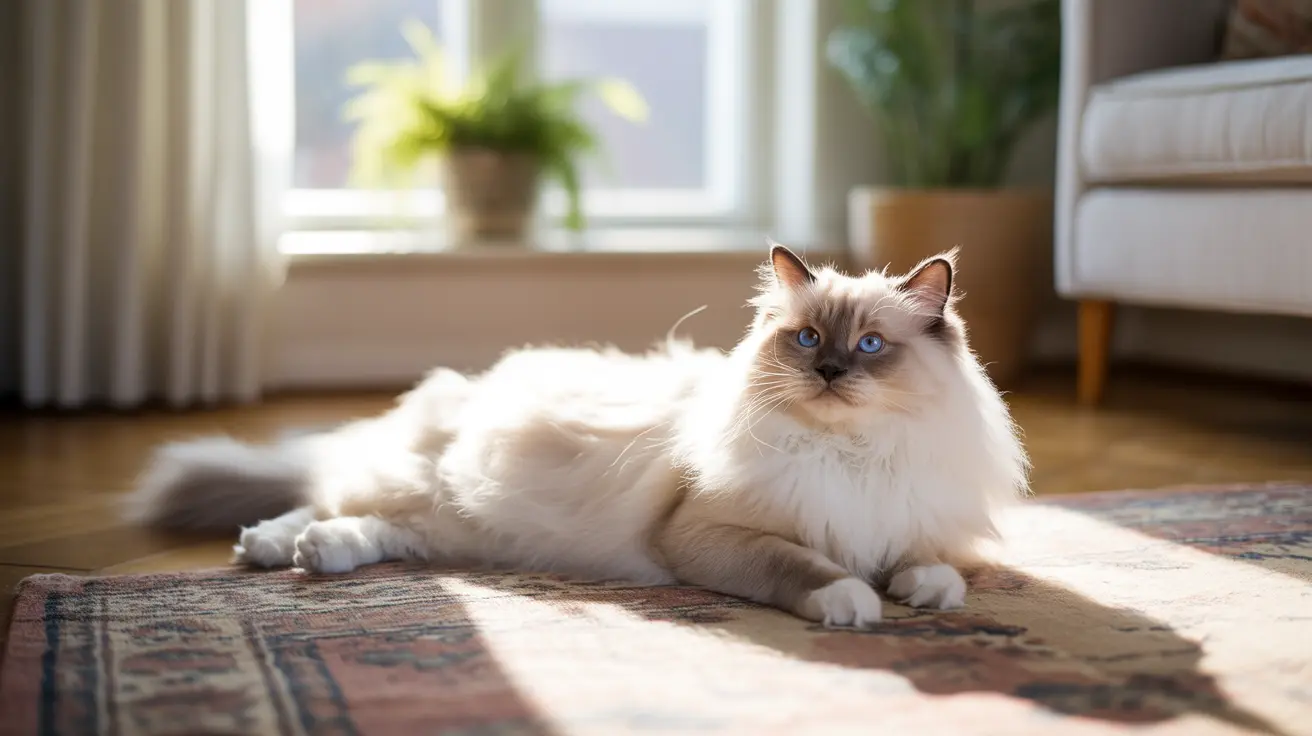If you've ever wondered why cats seem magnetically drawn to sunbeams, even on the hottest days, you're not alone. This fascinating behavior is deeply rooted in your cat's biology and evolutionary history. Let's explore why our feline friends are such dedicated sun worshippers and what this behavior means for their health and wellbeing.
From maintaining their ideal body temperature to conserving precious energy, sunbathing serves multiple important functions for cats. Understanding these reasons can help you better support your cat's natural instincts while keeping them safe and comfortable.
The Science Behind Feline Sunbathing
Cats have a naturally higher body temperature than humans, ranging from 99° to 102.5° Fahrenheit. This higher temperature requires careful regulation, and sunbathing helps cats maintain this warmth without expending extra energy. Their desert-dwelling ancestors passed down this efficient heating strategy, making it an instinctive behavior in modern house cats.
Unlike humans, cats don't produce vitamin D through sun exposure. Instead, they use sunbathing primarily for temperature regulation and energy conservation. This explains why they might seek out sunny spots even when the ambient temperature seems perfectly comfortable to us.
Benefits of Basking in the Sun
Temperature Regulation
Cats are most comfortable in environments between 86° and 101°F, significantly warmer than typical household temperatures. By laying in the sun, they can achieve their ideal temperature zone without using their own energy resources.
Energy Conservation
When cats bask in sunlight, they're actually being incredibly efficient with their energy use. Instead of burning calories to generate internal heat, they're letting the sun do the work for them, saving energy for other activities like hunting or playing.
Physical Comfort and Healing
The warmth from the sun helps relax muscles and increase blood flow, which can be especially beneficial for older cats or those with joint issues. Many cats rotate their position while sunbathing to ensure all their muscles receive this natural therapy.
Potential Risks and Safety Considerations
Heat-Related Dangers
While cats generally know when to move away from excessive heat, they can sometimes overdo it, especially if they're elderly or have health conditions. Signs of overheating include excessive panting, drooling, and lethargy.
Sun Protection Needs
Some cats, particularly those with white fur or pink skin, are more susceptible to sunburn. These cats may need special protection, such as pet-safe sunscreen or limited sun exposure, especially during peak UV hours.
Creating Safe Sunbathing Spaces
To help your cat enjoy the sun safely, create designated sunbathing spots with easy access to shade and water. Consider setting up window perches or cat beds near sunny windows, ensuring they can move to cooler areas when needed.
For outdoor cats, provide shaded retreats and multiple water sources near their favorite sunning spots. This helps prevent overheating while allowing them to indulge in their natural sunbathing instincts.
Frequently Asked Questions
Why do cats love to lay in sunny spots even during hot weather?
Cats seek out sunny spots because they help maintain their naturally high body temperature (99°-102.5°F) without expending energy. Their desert-dwelling ancestors passed down this energy-efficient behavior.
How does sunbathing help cats regulate their body temperature and conserve energy?
Sunbathing allows cats to reach their optimal temperature zone (86°-101°F) without using internal energy resources. This passive heating method helps them conserve calories for other activities.
What are the health risks of too much sun exposure for cats, and how can owners protect them?
Risks include overheating, dehydration, and sunburn. Protect your cat by providing shade, fresh water, and limiting exposure during peak heat hours. Watch for signs of overheating like excessive panting or lethargy.
Can cats get sunburned or develop skin cancer from sunbathing, and which cats are most at risk?
Yes, cats can get sunburned, especially those with white fur, pink skin, or thin fur. These cats are also more susceptible to skin cancer. Use pet-safe sunscreen and limit sun exposure for at-risk cats.
What precautions should I take to safely allow my cat to enjoy sunbathing indoors and outdoors?
Ensure access to shade and fresh water, create comfortable sunning spots away from peak heat, and monitor outdoor exposure times. Consider using window filters to reduce UV exposure for indoor cats.
Conclusion
Understanding why cats lay in the sun helps us better support this natural and beneficial behavior while keeping our feline friends safe. By providing appropriate sunbathing opportunities and monitoring for potential risks, we can ensure our cats enjoy this instinctive activity safely and comfortably.






